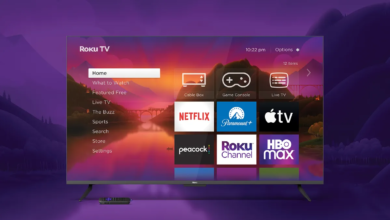How to Create Personalized Digital Ad Experiences That Drive Results

In today’s digital age, businesses are constantly seeking innovative ways to capture the attention of their target audience and drive results. One powerful strategy that has gained significant traction is the creation of personalized digital ad experiences. By tailoring ad content to individual preferences and behaviors, companies can significantly enhance their marketing efforts. In this comprehensive guide, we’ll explore the intricacies of crafting personalized digital ad experiences that not only engage your audience but also deliver tangible results.
Personalized Digital Ad Experiences
In a world inundated with digital advertisements, it’s becoming increasingly challenging for businesses to stand out and capture the attention of their target audience. This is where the power of personalization comes into play. By tailoring your digital ad experiences to suit the unique preferences and behaviors of individual users, you can create a more profound impact and drive better results.
Understanding Your Target Audience
Before diving into the world of personalized digital ads, it’s crucial to gain a deep understanding of your target audience. This involves collecting and analyzing data-driven insights to identify customer segments and their specific needs and preferences.
Crafting Compelling Ad Content
Personalized Digital Ad Experiences: Crafting compelling ad content is a fundamental aspect of personalized digital advertising. Your ability to capture the attention of your target audience and convey your message effectively can make or break the success of your ad campaign. Here are some key strategies to craft ad content that not only engages your audience but also drives results:
Tailoring Messages to Resonate
Understand Your Audience: Before crafting ad content, it’s essential to have a deep understanding of your target audience. What are their pain points, desires, and interests? Tailor your message to speak directly to these aspects of their lives.
Segmentation is Key: Different audience segments may have unique needs and preferences. Create tailored messages for each segment to ensure that your content resonates with specific groups within your larger audience.
Personalization: Whenever possible, incorporate personalized elements into your ads. This can include using the recipient’s name, referencing their past interactions with your brand, or suggesting products or services based on their browsing or purchase history.
Solve Problems: Highlight how your product or service can solve a problem or fulfill a need for your audience. Frame your content in a way that shows the value and benefits you offer.
Read more: How to Implement an Effective Digital Marketing Strategy 2023
Eye-Catching Visuals
Visual Storytelling: Visual elements can convey powerful messages. Use images, graphics, and videos that tell a story and evoke emotions. A well-chosen visual can make your ad more memorable.
Consistency: Ensure that your visuals align with your brand’s identity and message. Consistency in colors, fonts, and imagery helps in brand recognition.
Quality Matters: Invest in high-quality visuals. Blurry or pixelated images can diminish the credibility of your brand.
Mobile Optimization: Given the prevalence of mobile devices, ensure that your visuals are optimized for mobile viewing. Test how your ad looks on various screen sizes and resolutions.
Engaging Copy
Clarity and Conciseness: Be clear and concise in your messaging. Avoid jargon or overly complex language. Use short, impactful sentences to get your point across quickly.
Emotion and Storytelling: People connect with stories and emotions. Craft your copy to evoke emotions that resonate with your audience. Share success stories, customer testimonials, or real-life examples.
Call to Action (CTA): Clearly state what action you want the audience to take. Whether it’s “Shop Now,” “Learn More,” or “Subscribe,” make your CTA compelling and actionable.
Highlight Benefits: Focus on the benefits of your product or service rather than just its features. Explain how it will improve the lives of your customers.
A/B Testing: Continuously test different versions of your ad copy to see which resonates best with your audience. A/B testing can help refine your messaging over time.
User Experience
Page Load Speed: Ensure that the landing page your ad directs users to loads quickly and is mobile-friendly. Slow-loading pages can lead to high bounce rates.
Consistency: Maintain consistency between your ad and the landing page. The messaging, visuals, and branding should align to provide a seamless user experience.
Simplicity: Keep your ad content and landing page simple and clutter-free. Too much information can overwhelm users.
Testing and Optimization: Regularly analyze user behavior on your landing page and make improvements based on the data. Small tweaks can lead to significant improvements in conversion rates.
Crafting compelling ad content is both an art and a science. It requires a deep understanding of your audience, creative storytelling, and ongoing optimization. By tailoring messages, using eye-catching visuals, engaging copy, and providing an excellent user experience, you can create ads that not only grab attention but also drive results in the world of personalized digital advertising.
Leveraging Behavioral Data
Personalized Digital Ad Experiences: Behavioral data is the cornerstone of personalization. Discover how to track user behavior and leverage predictive analytics to anticipate user preferences and needs.
Implementing Personalization Technologies
Personalized Digital Ad Experiences: Artificial intelligence and machine learning play a pivotal role in personalization. Explore the technologies that enable dynamic content delivery and personalized experiences.
The Role of User Profiling
Personalized Digital Ad Experiences: User profiling involves creating detailed profiles of your users. Learn how to build comprehensive user profiles and deliver content that resonates with each individual.
Cross-Channel Personalization
Personalized Digital Ad Experiences: To create a seamless customer experience, it’s essential to maintain consistency across channels. Find out how to ensure your personalized ads are cohesive across platforms.
A/B Testing and Optimization
Personalized Digital Ad Experiences: Continuous improvement is key in personalized advertising. Learn how to conduct A/B tests to fine-tune your campaigns and achieve optimal results.
Measuring Success
Personalized Digital Ad Experiences: Discover the key performance indicators (KPIs) that will help you gauge the success of your personalized ad campaigns and how to analyze campaign data effectively.
The Ethics of Personalization
Personalized Digital Ad Experiences: As businesses embrace the power of personalized digital advertising, it becomes increasingly crucial to address the ethical implications associated with this practice. Personalization, when done thoughtfully and responsibly, can yield significant benefits for both businesses and consumers. However, it also raises concerns related to privacy, transparency, and user consent.
Privacy Concerns
One of the primary ethical considerations in personalized advertising is privacy. To create personalized experiences, companies often collect and utilize vast amounts of user data, ranging from browsing history to personal preferences. While this data can enhance the effectiveness of advertising, it also poses a potential threat to user privacy.
To navigate this ethical dilemma, businesses must prioritize data security and transparency. Users should be informed about the data being collected, how it will be used, and have the option to opt out. Respecting user privacy and adhering to data protection regulations such as GDPR and CCPA is essential to maintain trust.
Transparency and Consent
Transparency and user consent are pillars of ethical personalization. Users should have full visibility into how their data is being used to personalize ads. This includes clear communication about data collection practices, the purposes of data usage, and the ability to opt in or out of personalized advertising.
Providing users with control over their data empowers them to make informed decisions about their online experience. It also fosters a sense of trust between businesses and consumers, which is critical for long-term relationships.
Striking the Right Balance
Personalized Digital Ad Experiences: Balancing personalization with ethics can be challenging. There’s a fine line between offering tailored content that enhances user experiences and crossing into the territory of intrusive or manipulative advertising. Over-personalization, where ads feel invasive or overly familiar, can lead to a negative user experience and damage a brand’s reputation.
Ethical personalization involves striking the right balance between relevance and respect for user boundaries. Businesses should aim to provide value through personalized content without making users feel uncomfortable or surveilled.
Case Studies
Personalized Digital Ad Experiences: Explore real-world success stories in personalized advertising to gain insights into how leading companies have achieved remarkable results through personalization.
Challenges and Pitfalls
While personalization offers immense benefits, it’s essential to be aware of potential challenges and pitfalls. Avoid over-personalization and prioritize data security.
Future Trends
Personalized Digital Ad Experiences: Stay ahead of the curve by exploring future trends in personalized advertising, including hyper-personalization and the rise of voice and conversational ads.
Read More: Boosting Your Business with Effective Social Media Marketing
Conclusion
Personalization, when done effectively, has the power to engage audiences on a deeper level, increase conversion rates, and enhance brand loyalty. However, it’s essential to approach personalization with responsibility and transparency, addressing privacy concerns and respecting user consent.
Understanding your target audience, crafting compelling ad content, leveraging behavioral data, and implementing personalization technologies are essential steps in the process. Additionally, user profiling, cross-channel consistency, A/B testing, and continuous measurement of success are key strategies to ensure your personalized ad campaigns deliver the desired results.
As personalization continues to evolve, it’s crucial for businesses to stay informed about emerging trends and challenges. Hyper-personalization, voice and conversational ads, and advanced AI-driven techniques represent the future of personalized advertising.
FAQs
1. Is personalization only relevant for large businesses?
Personalization can benefit businesses of all sizes, as long as there is access to customer data and the means to tailor content.
2. Are there ethical concerns with personalization?
Yes, ethical concerns include privacy issues and the need for transparency and user consent.
3. How can I measure the success of personalized ad campaigns?
Key performance indicators (KPIs) such as click-through rates, conversion rates, and return on investment (ROI) are used to measure success.
4. What are some common pitfalls to avoid in personalized advertising?
Over-personalization, data security breaches, and not respecting user preferences are common pitfalls to avoid.
5. What does the future hold for personalized advertising?
The future includes hyper-personalization, voice, and conversational ads, as well as more advanced AI-driven personalization techniques.












2 Comments